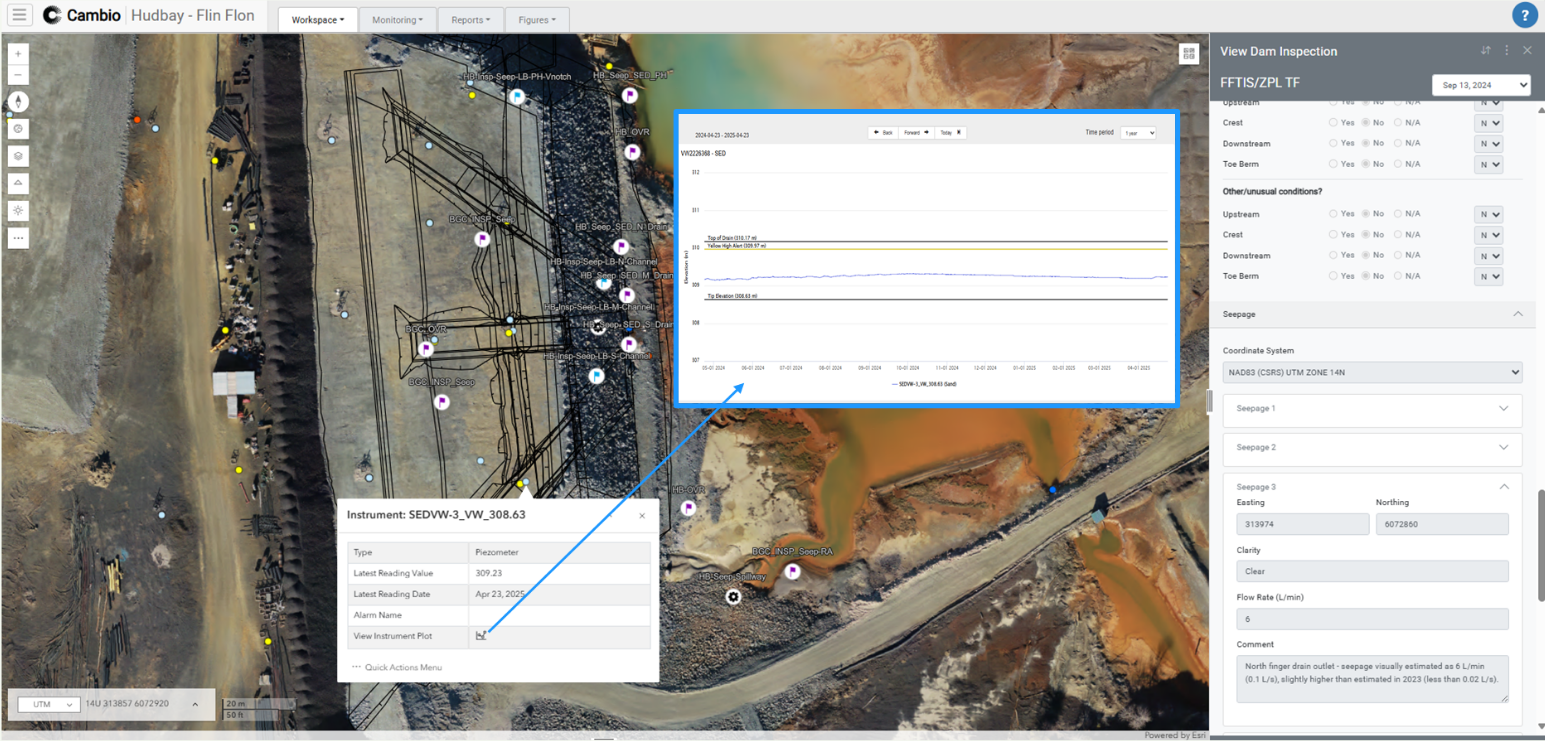Transforming Tailings Management at Red Chris Mine
.png)
How a geospatial digital knowledge base is enhancing communication and decision-making
At Newmont’s Red Chris Mine in northern British Columbia, tailings management is a complex, long-term collaboration between multidisciplinary teams — from construction crews and engineers to field technicians and corporate oversight. Managing this collaboration effectively depends on one thing above all: a shared understanding of what’s happening at site.
Over the past several years, the Red Chris team, supported by BGC Engineering and Cambio Earth, has implemented a geospatial digital knowledge base to strengthen that understanding. The system centralizes design, construction, and monitoring data into a single digital environment — helping the team communicate more clearly, make faster decisions, and improve confidence in dam performance.
From Siloed Data to a Shared Knowledge
Vast amounts of data are generated at tailings facilities : borehole logs, instrumentation readings, drone imagery, survey files, lab results, and design revisions spanning decades. Historically, these datasets were stored across multiple platforms and static documents, creating silos that made it difficult to see the full picture.
At Red Chris, that challenge became an opportunity. By adopting Cambio, a web-based earth science platform, the team integrated critical datasets into one shared view. Topography, design surfaces, geological information, field test results, and instrumentation readings can now be visualized together in plan and profile— providing context that improves day-to-day communication and supports long-term dam stewardship.
Supporting Construction Quality and Collaboration
Each construction season brings new challenges and time-sensitive decisions. Cambio supports both the Owner and Engineer of Record (EoR) teams by integrating design data, survey results, and field test information into one dynamic environment.
Field staff use the mobile application to log compaction and material testing data, even offline, with results automatically summarized in the forms that track compliance with technical specifications. These workspaces make it easy to see where testing has been completed, identify gaps, and visualize progress — replacing static reports with live information.
That transparency has helped improve communication between field crews and management. Instead of trading spreadsheets or status updates, stakeholders can quickly review the same interactive view of the dam, including photos, historical imagery, and recent survey data.
Contextualizing Dam Performance Monitoring
Beyond construction, the platform has become a key tool for dam performance monitoring. The Red Chris Tailings Impoundment Area includes a network of vibrating wire piezometers, slope inclinometers, and ShapeArrays designed to monitor dam performance over time. Cambio automatically ingests and plots these readings, allowing users to view trends alongside topography, aerial imagery, and construction records.
In one instance, data from a slope inclinometer suggested minor movement along the South Dam. By overlaying the readings with construction and foundation data, the EoR and site team quickly determined that the deformation was due to an instrument installation issue, not an actual movement in the structure. Construction continued without interruption — an outcome made possible by having all relevant data available in one place.

Collaboration as the Key to Digital Success
Developing a robust, user-friendly data management platform required close collaboration between the Owner, the EoR, and the software development team. Early engagement and iterative feedback were critical in tailoring the platform to site operations.
That collaboration continues today. As new features and datasets are added, the Red Chris team refines how the knowledge base supports operational decisions — from construction planning to annual dam safety inspections.
While the initial platform setup required time and commitment, the payoff has been clear: improved communication, better visibility, and more informed decision-making throughout the project lifecycle.
Looking Ahead
The Red Chris experience demonstrates that digital transformation in tailings management isn’t just about adopting new tools — it’s about creating shared understanding. By integrating people, process, and platform, teams can turn data into actionable insight and manage tailings facilities more safely and proactively.
.svg)


